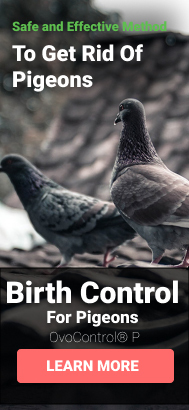Paper Manufacturing Bird Control: The Most Helpful Methods
Written by Erick Wolf , Reviewed by Alexander MacDonald
The importance of bird control in paper manufacturing is often overlooked. Yet, failure to address this issue can result in significant consequences, from health hazards to equipment damage, which may incur high repair costs and even cause potential liabilities and penalties.
Bird control for paper factory facilities is not just a matter of cleanliness or aesthetics but a crucial aspect of maintaining an efficient and safe working environment.
In this article, we’ll take an in-depth look at paper manufacturing bird control, including discussing why it’s crucial and identifying some of the most popular paper facilities' bird control methods today.
Why is Paper Manufacturing Bird Control Important
Ensuring paper manufacturing bird control is more than a matter of cleanliness or aesthetics—it's crucial to maintaining a safe and efficient work environment. Understanding the hazards of unchecked bird populations in these contexts is the first step toward effective bird management.
Health Hazards
Birds can introduce various health hazards into paper manufacturing environments. Many bird species can carry diseases that, if transmitted to workers, can pose serious health risks.
Fire Hazards
Bird droppings are not just unsightly; they're also corrosive. When accumulated on equipment and structures, these droppings can create a significant fire hazard.
Slip and Fall Hazards
Bird droppings can also lead to slip and fall hazards. Slippery surfaces from bird mess can increase the risk of accidents, threatening worker safety and productivity.
Work Interruptions and Production Stoppages
A substantial bird presence in a paper factory can lead to work interruptions and production stoppages. Birds can invade operational areas, leading to unplanned pauses in production and reducing overall productivity.
Equipment Damages and Deterioration
Birds, and more specifically, their droppings, can cause substantial damage to the machinery and structures in paper factories. The corrosive nature of bird droppings can lead to the deterioration of valuable equipment.
High Repair Costs
The mess created by birds can lead to high repair costs. Cleaning up and repairing damage from birds is a time-consuming and costly process that can significantly impact the bottom line of paper facilities.
Potential Liabilities and Penalties
Bird-related problems can lead to potential liabilities and penalties if not appropriately addressed. For example, a company may face fines for health and safety violations or be held responsible for disease outbreaks traced back to bird infestations.
Birds are typically attracted to paper facilities due to the heat these factories generate—a vital resource for survival. Therefore, implementing bird control for paper facilities is necessary to manage the risks associated with infestations effectively. With paper facilities bird control measures in place, these potential hazards can be mitigated, ensuring a safer, more productive working environment.
The Most Effective Paper Manufacturing Bird Control Strategies
There are several strategies for paper mill bird control. While some methods are more traditional, others leverage modern technology for better effectiveness.
Birth Control
One of the emerging methods for bird control is birth control. It involves using substances such as OvoControl to reduce bird reproduction, eventually humanely reducing the bird population.
Bird Netting
Bird netting can act as a physical barrier, preventing birds from roosting and nesting in areas of the paper mill. However, netting can be unsightly, challenging to install and maintain, and unsuitable for all types of structures or situations.
Bird Deterrents
Bird deterrents, which include audio and visual devices designed to scare birds, can be effective. However, birds often acclimate to these deterrents over time, reducing their effectiveness. Furthermore, these methods do not address the problem's root cause: the ever-growing bird population.
Bird Spikes and Wires
Bird spikes and wires work to prevent birds from landing on various surfaces. Yet, they can also be seen as inhumane and cause injury to birds. Additionally, their presence can make facilities look unwelcoming and potentially harm the company's public image.
Bird Gel
Bird gel, a sticky substance that birds dislike stepping on, can deter birds from landing on specific surfaces. However, over time, dust and debris can render the gel ineffective. The gel also requires regular reapplication, resulting in higher maintenance costs.
Bird Slopes
Bird slopes can effectively prevent birds from landing or nesting on certain surfaces. Nevertheless, these devices may be ineffective against smaller bird species that can still grip the slopes. They also require significant structural modifications, which can be costly and unsightly.
Why Use OvoControl for Paper Facilities Bird Control?
OvoControl has emerged as an effective and humane solution among the numerous bird control strategies. It is a form of birth control for birds, administered through food. Over time, it reduces the bird population in a non-lethal way, making it an ethical and sustainable choice for paper factory bird control.
OvoControl is also cost-effective. Reducing bird populations decreases the need for other deterrents and the associated maintenance costs. Given its benefits, OvoControl has become a popular and recommended solution for paper manufacturing bird control.
Final Thoughts
The importance of paper manufacturing bird control cannot be overstated. While several methods can deter birds and protect your facilities from the associated risks, birth control for birds stands out as the most humane and effective long-term solution.
By controlling the bird population's growth rate, this method addresses the root cause of the issue—something that deterrents and barriers can't achieve. It is a strategic, cost-effective approach that also considers the well-being of the birds, positioning it as an ethical choice.




